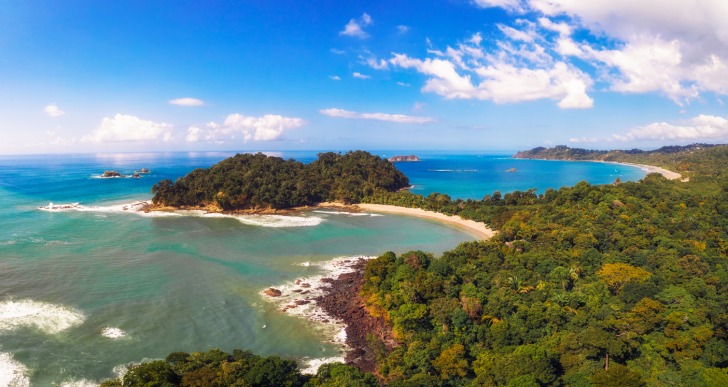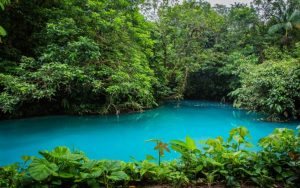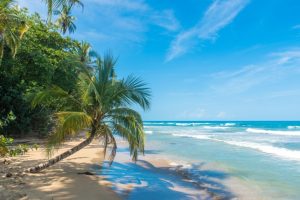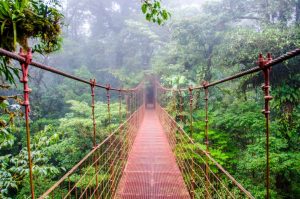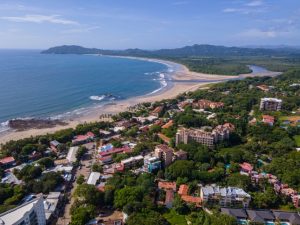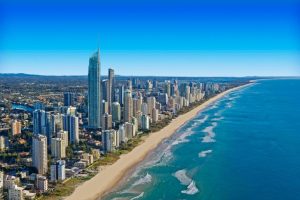 Costa Rica : Safety by City
Costa Rica : Safety by City
Costa Rica - safety as a country
Manuel Antonio represents a tropical oasis and a small slice of paradise surrounded by two bodies of water in southwestern Costa Rica.
The city is bordered by the Pacific Ocean on the west coast and the Caribbean Sea to the east.
This little-known paradise features a picturesque landscape where lush rainforest and sandy beaches gently collide to create a uniquely beautiful habitat along its natural coastlines.
This Costa Rican town has much to offer tourists from around the globe who visit Manuel Antonio to bask in the blazing sun while exploring beaches, rainforests, and natural parks.
Read on to learn about common warnings and dangers experienced by previous travelers.
We’ll also discuss how travelers can stay safer by following the tips and tricks highlighted in our travel safety guide below!
Warnings & Dangers in Manuel Antonio

OVERALL RISK: MEDIUM
The overall crime risk for Manuel Antonio falls into the medium range, with higher and lower risks in specific areas and under certain conditions. Travelers should know that petty crimes like pickpocketing, purse snatching, bag snatching, and scams are the norm in this Central American country, where all forms of crimes – including those that happen in broad daylight are on the rise.

TRANSPORT & TAXIS RISK: HIGH
Using local transportation options in Manuel Antonio has its risks. Globetrotters seeking to hail local "pirate taxis" can find themselves in hot water when they realize they are riding with potentially unlicensed and uninsured drivers. Taxi scams that result in higher fares and overcharging unwitting travelers are also common here. Reduce the risk of becoming a scam or crime victim while traveling in Costa Rica by using reputable service providers with verifiable reviews.

PICKPOCKETS RISK: MEDIUM
While the city and beaches of Manuel Antonio have historically been considered safe, rising incidents of daylight robberies, theft, bag snatching, and pickpocketing are at an all-time high. Distracted wayfarers should beware when visiting crowded local markets and beaches and when riding public transportation.

NATURAL DISASTERS RISK: MEDIUM
US travelers bound for Manuel Antonio, Costa Rica, should know that the area faces a moderate risk of natural disasters. The unique geography of this area makes it moderately prone to earthquakes, volcanic eruptions, floods, landslides, and tsunamis. Major events have occurred in recent years, increasing risk.

MUGGING RISK: MEDIUM
The risk of getting mugged while enjoying your Costa Rican vacation is moderately high in Manuel Antonio. Local criminals work together in pairs or groups to distract unwitting victims while setting them up for muggings, robberies, bag snatching, and petty theft. Higher crime neighborhoods like San Jose and the Limon province have more incidents of violent and property crimes.

TERRORISM RISK: LOW
Costa Rica has a long history of being known for its peaceful and stable climate. As such, while the risk for terrorist attacks from extremist groups is ever present in any country, the likelihood of terrorism in Costa Rica is much lower than in comparable countries like Colombia, where terror threats are currently through the roof.

SCAMS RISK: MEDIUM
US travelers enjoying the local sights and sounds of Manuel Antonio are at moderate risk of being scammed. Local criminals specifically target tourists in some instances where they use the language barrier as a cover for nefarious activity. Travelers need to learn conversational basics to reduce the likelihood of being tricked or scammed in Costa Rica.

WOMEN TRAVELERS RISK: MEDIUM
Visiting Costa Rica can be a memorable experience when the right travel safety precautions are in place. Female travelers should note that incidents of non-violent crimes like petty theft and pickpocketing are steadily rising in this area, along with isolated incidents of more violent crimes like assault and robbers, which have recently happened in broad daylight.

TAP WATER RISK: LOW
Over 90 percent of the population of Costa Rica has access to treated and drinkable water. Most urban areas and popular tourist destinations have treated tap water available for visitors. While the drinking water risk is relatively low in this area, travelers with digestive issues and sensitive stomachs may still want to consider bottled water when traveling abroad.
Safest Places to Visit in Manuel Antonio
There are a variety of fun and exciting destinations that have been “marked safe” for enjoyment by travelers.
The Playa Espadilla Norte is one example of a local beach that is popular with families.
Locals also recommend visiting the Bahia Manuel Antonio, which is a hidden cove offering stunning views and calm waters.
Places to Avoid in Manuel Antonio
While most of Manuel Antonio is relatively safe for tourists, there are a few areas to avoid.
Steer clear of the outskirts of Quepos, where backstreets close to ports represent crimes of opportunity for lurking bandits.
Be extra careful when walking in groups at night, and never venture off itineraries and nature trails into unknown and unprotected areas.
Tourists should also beware of offers for tours from unlicensed and unsupervised tour guides.
Safety Tips for Traveling to Manuel Antonio
Adhere to the following safety tips If you cannot avoid traveling to Manuel Antonio, Costa Rica, during this highly volatile time.
- Secure Valuables When Visiting Local Beaches: Avoid becoming the victim of an opportunistic crime by securing valuables like cell phones and cash in your hotel safe or securely locked in the trunk of your vehicle when visiting local beaches.
- Use the Buddy System: You and your travel companions can stay safer in Manuel Antonio by using the buddy system and traveling in pairs when visiting local beaches and entertainment hotspots.
- Beware of Unlicensed Taxi Drivers: Certain areas of Manuel Antonio are known for “Pirate Taxis,” which are operated by unlicensed and uninsured drivers who claim to be affiliated with reputable transportation providers.
- Research Local Prices: While Costa Rica has historically been considered safe, incidents of petty thefts and scamming are on the rise. Research the costs of local goods and services before you arise to avoid being overcharged.
- Never Venture Out Alone: Use the buddy system, travel in pairs, and stick with a pre-planned itinerary to reduce your chances of being misled, scammed, or becoming a crime victim while traveling in Costa Rica.
- Only Use Reputable Services: Manuel Antonio has a high number of scams where locals offer transportation services, adventure services, and currency exchange services to unknown victims. Research your services before you arrive and only use reputable local service providers.
- Learning the Language Can Be a Lifesaver: Learning basic conversational Spanish before traveling to Central America can be a game-changer. Understanding Spanish can help travelers save time, have better travel experiences, and reduce the likelihood of becoming a victim.
- Register Your Trip with the State Department: The US State Department offers its STEP program for international travelers. Register your trip with the State Department to make it easier to access emergency travel services and gain access to US-based support while traveling abroad.
- Swap Out US Currency Before Arrival: While many Costa Rican travel destinations happily accept US currency as a form of payment, some local attractions prefer or require their own local currency. Use reputable currency exchanges to have a stash of local currency on hand upon arrival.
- Drink Bottled Water: Many tourist attractions in Manuel Antonio offer treated water. However, US travelers with sensitive digestive tracts and those who take time to adjust to local drinking water may want to opt for bottled water instead.
So... How Safe Is Manuel Antonio Really?
Manuel Antonio has historically been considered a safe and peaceful destination for travelers.
However, rising crimes against property and people have recently taken the area from a low crime area and turned it into a moderate to high crime area.
The most common incidents of crimes are petty theft and non-violent crimes.
There are increasing numbers of violent crimes, including robbery and assault, happening in the area within the past three years.
US travelers should follow common sense safety tips to stay out of danger and beware that there have been increasing numbers of incidents of violent crimes against tourists.
The Numbeo Global Crime Index has assigned Costa Rica a score of 53.52, which is an indicator of moderate to high crime.
Numbeo’s reports show that overall crime rates in Costa Rica are moderate to high and slightly higher in neighboring cities like San Jose.
Violent and property crimes have increased in all areas within the past three years.
These crime waves have prompted US and Canadian officials to issue level two travel safety advisories warning travelers to beware of the increase and potential for violence when traveling in Central America.
How Does Manuel Antonio Compare?
| City | Safety Index |
|---|---|
| Manuel Antonio | 58 |
| Tamarindo | 57 |
| Monteverde | 74 |
| Puerto Viejo | 52 |
| Quepos | 55 |
| Santa Teresa | 72 |
| San Jose | 59 |
| Deadwood (United States) | 80 |
| Sturgis (United States) | 80 |
| Pierre (United States) | 81 |
| Spearfish (United States) | 80 |
| Hill City (United States) | 83 |
| Temuco (Chile) | 31 |
Useful Information

Visas
Manuel Antonio, Costa Rica, generally accepts most US travelers for up to 180 days without requiring a Visa. Verify if you qualify for Visa-free travel or if an exception is necessary based on your specific circumstances by contacting the Embassy of Costa Rica.

Currency
The Colón is Costa Rica's official currency. Convert US dollars to local currency by using reputable online or verified local currency exchange providers at airports and hotels and by using local ATMs.

Weather
Manuel Antonio's coastal location means it has a tropical climate with varying temperatures. The dry season in Costa Rica runs from December to April. Daytime is bright and sunny, with temperatures that can climb into the high 90s. Costa Rica has a rainy season with cooler temperatures that runs from May to November.

Airports
Air travelers to Costa Rica will find domestic and international flight services available at the regional airport in San Jose. The Santamaria International Airport is just over 150 miles outside of Manuel Antonio's city limits.

Travel Insurance
Smart travelers who want to protect their Costa Rica travel can get travel insurance to protect them against unexpected financial losses that can happen when traveling abroad. Covered events can include trip cancelations, emergency medical services, or US-based documentation support while traveling abroad.
Manuel Antonio Weather Averages (Temperatures)
Average High/Low Temperature
| Temperature / Month | Jan | Feb | Mar | Apr | May | Jun | Jul | Aug | Sep | Oct | Nov | Dec |
|---|---|---|---|---|---|---|---|---|---|---|---|---|
| High °C |
25 | 26 | 27 | 28 | 27 | 27 | 26 | 27 | 27 | 26 | 25 | 25 |
| Low °C |
19 | 19 | 20 | 20 | 21 | 20 | 20 | 20 | 20 | 20 | 20 | 20 |
| High °F |
77 | 79 | 81 | 82 | 81 | 81 | 79 | 81 | 81 | 79 | 77 | 77 |
| Low °F |
66 | 66 | 68 | 68 | 70 | 68 | 68 | 68 | 68 | 68 | 68 | 68 |
Costa Rica - Safety by City
| City | Safety Index |
|---|---|
| Manuel Antonio | 58 |
| Monteverde | 74 |
| Puerto Viejo | 52 |
| Quepos | 55 |
| San Jose | 59 |
| Santa Teresa | 72 |
| Tamarindo | 57 |
